I have a geom_area plot that looks like this: 
I want to color everything above the x-axis green and everything below the x axis red. I have a category column in my data that contains the string "positive" for all positive values and "negative" for all negative values, so I tried simply doing fill = category and using scale_fill_manual to set positive to green and negative to red, but that gives me this:

Green the above the x looks right, but the red below the axis isn't right. I've checked my data and there are no negative data points where it's coloring red after Oct20, and using geom_point instead I get the correct colors.
Here's a sample of my data:
created score category
2011-10-19 21:26:19 2 positive
2011-10-19 22:50:33 -2 negative
2011-10-20 15:12:38 -2 negative
2011-10-20 17:19:24 -2 negative
2011-10-20 22:12:44 2 positive
2011-10-20 22:16:57 4 positive
2011-10-21 08:22:53 2 positive
and here's the code I'm using to make the plot:
ggplot(data = df, aes(x = created, y = score, colour = category)) + geom_point(aes(fill = category)) + scale_fill_manual(values = c("positive" = "green", "negative" = "red"))
My problem might be related to this previous question.
